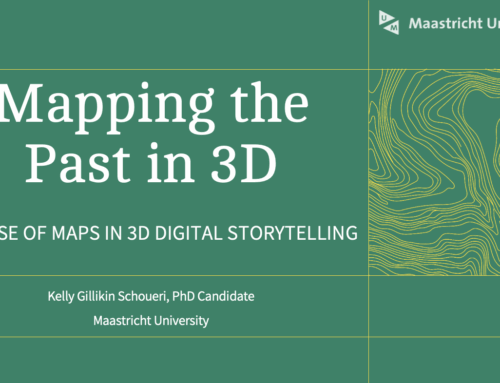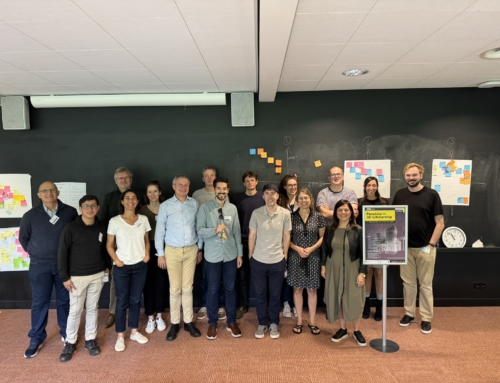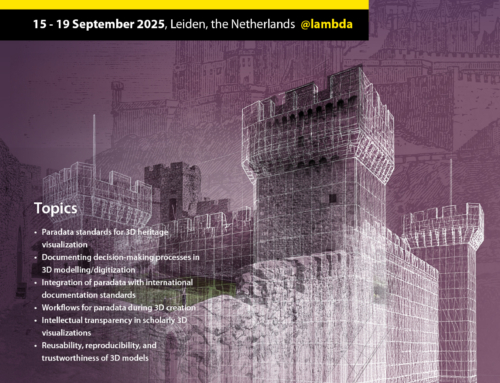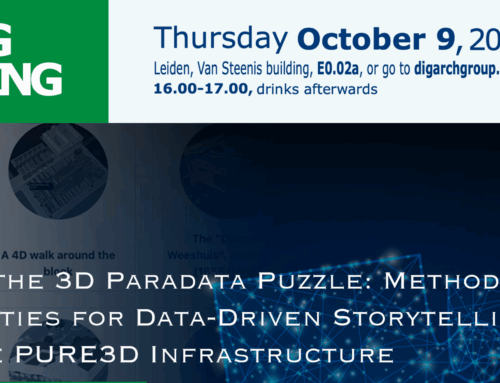Call for New 3D Scholarly Editions
What: A call for new projects for PURE3D
When: Call opens 21 June 2023 and closes 18 August 2023
Where: For selected projects, virtual workshops, tutorials, and assistance from the PURE3D team
How: See further details below

Background
PURE3D: The Infrastructure for the Publication and Preservation of 3D Scholarship, funded by Platform Digitale Infrastructuur – Social Sciences & Humanities is delighted to announce a call for new 3D scholarly editions to be developed in its beta infrastructure. These editions take as their premise that the 3D model is a valuable source for taking a user-centric approach for the communication of research findings, (alternative) hypotheses, and (historical) contexts. 3D models are thus the “text” which can be enriched via multimodal annotation.
The PURE3D environment provides a user-friendly and persistent environment for individuals or teams to create their editions using Smithsonian Voyager, an interface for creating editions and narratives with a 3D model at its centre. We welcome projects from any field in which 3D can be used as a modality for argumentation, simulation, knowledge communication, and hypothesis testing, including but not limited to heritage, archaeology, history, museology, architecture, anthropology, forensics, and engineering.
Successful projects will receive a modest honorarium to support edition creation. This may be used to backfill teaching buyout, to hire staff to help with annotation and contextualisation, or to visit Maastricht to work with the PURE3D team.
Examples of existing projects within the infrastructure include:
Contested Memories: The Battle of Mount Street Bridge
Let there Be Light: Nederlands Mining Museum
Rembrandt’s Birthplace: Heritage Leiden
Project Coming Soon
Maastricht 1748: The Square of Our Lady and it's claustral belt
Modern Art in 3D: Museum Van Bommel van Dam
Amsterdam's Vlooienburg Neighbourhood
This call is to source new projects which will be carried out between c. 15 October 2023 and 30 July 2024. Teams can be located anywhere in the world as support can be carried out virtually. The main requirement for application is that you have an existing 3D model or models to work with (you could propose a number of editions on a particular topic or theme), and have (or can source) text, images, videos, other 3D models, etc., that you would use to contextualise it/them.
Requirements
One or more 3D models that have been completed (or nearly completed) by the time this call closes. 3D models can be in the form of digitised objects, structures, landscapes etc. or reconstructed environments in computer graphics. Models can be project-specific or created by a heritage institution, be free from copyright (or copyright is explicitly obtained) and meet the technical requirements below:
- Obj, fbx or gltf/glb format (Draco Compression is advised for .glb files)
- Including PBR extensions that conform to the three.js standard: metalness/roughness as its PBR shading model (Please note that Specular/Glossiness not supported by three.js)
- For single digitised objects, one 4K texture map (in .jpg with 86 compression). For complex scenes, the textures of the various parts should conform to the 1024×1024 texture standard.
- Model size maximum: 230,000 triangles for all geometry in the scene. This ensures good performance but can be higher if it is a complex object/scene.
- Essential model information: geometry, texture and normals. Please note that other 3D model elements, e.g., lights, cameras, color vertex information are not needed/cannot be supported.





